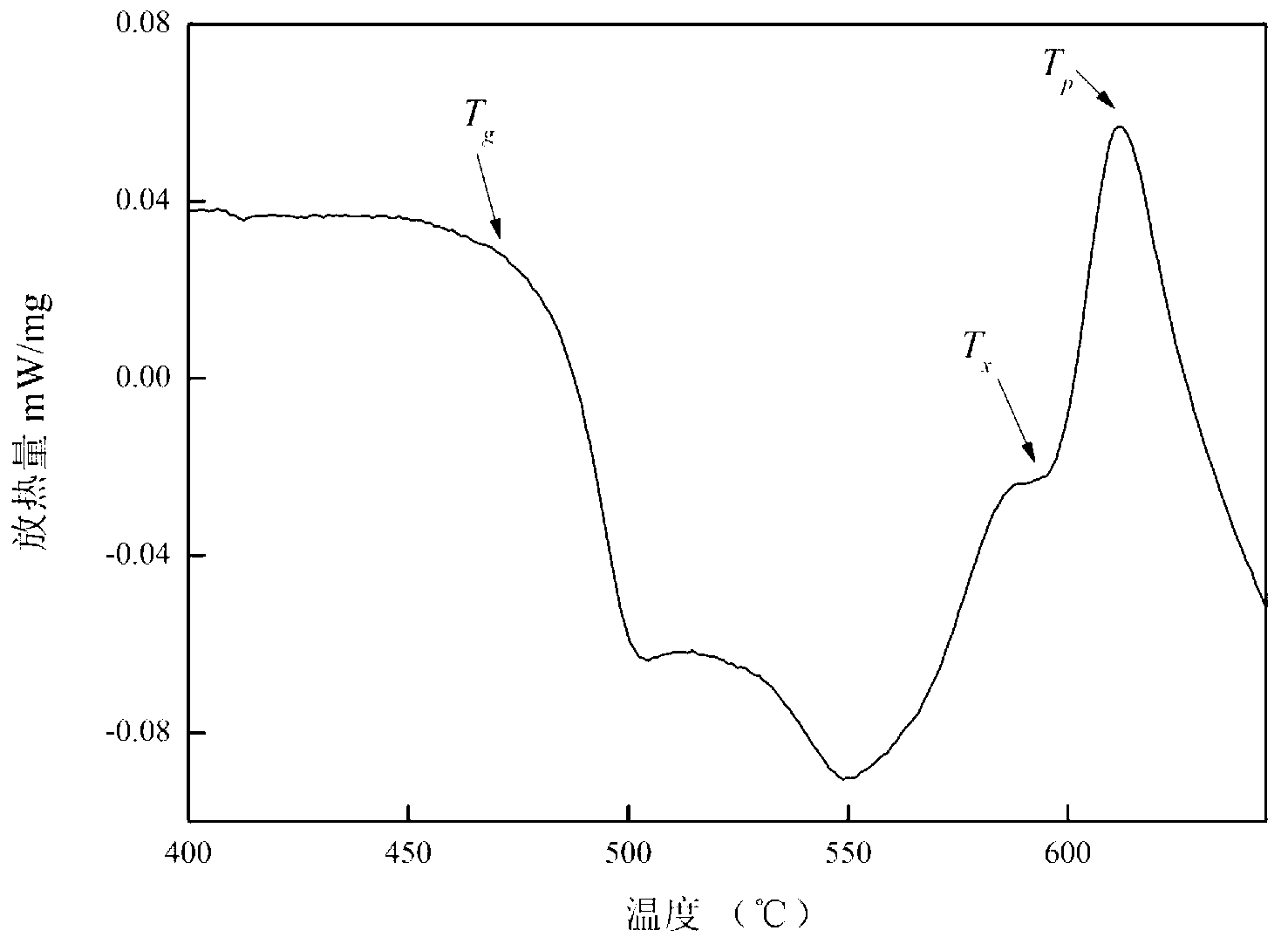High-concentration erbium ion doped tellurium tungstate glass capable of emitting light at mid-infrared 2.7 microns
A technology of tellurtungstate and erbium ions, which is applied in the field of high-concentration erbium ion-doped mid-infrared 2.7μm luminescent tellurungstate glass, can solve the problems that have not been reported, and achieve high doping concentration and infrared transmittance. High, excellent physical and chemical properties
- Summary
- Abstract
- Description
- Claims
- Application Information
AI Technical Summary
Problems solved by technology
Method used
Image
Examples
Embodiment 1
[0028] Composition as in Table 1 1 # As shown, the specific preparation process is as follows:
[0029] According to table 1 in 1 # The mole percentage of the glass composition, calculate the corresponding weight of each composition, weigh the raw materials and mix them uniformly; put the mixture into a corundum crucible and melt it in a silicon carbide rod electric furnace at 1200 ° C, and clarify it for 15 minutes after the mixture is completely melted. Minutes, pour the molten glass into the preheated mold; quickly move the glass into a muffle furnace that has been heated to 420°C, keep it warm for 10 hours, then lower it to room temperature at a rate of 10°C / hour, and take out the glass after cooling completely sample.
[0030] The test results for this glass are as follows:
[0031] Take a small sample after annealing, grind it into a fine powder with an agate mortar, and conduct a differential thermal analysis test. The differential thermal curve of the mid-infrared ...
Embodiment 2
[0034] Composition as in Table 1 2 # As shown, the specific preparation process is as follows:
[0035] According to table 1 in 2 # The mole percentage of the glass composition, calculate the corresponding weight of each composition, weigh the raw materials and mix them uniformly; put the mixture into a corundum crucible and melt it in a silicon carbide rod electric furnace at 1200 ° C, and clarify it for 15 minutes after the mixture is completely melted. Minutes, pour the molten glass into the preheated mold; quickly move the glass into a muffle furnace that has been heated to 420°C, keep it warm for 10 hours, then lower it to room temperature at a rate of 10°C / hour, and take out the glass after cooling completely sample.
[0036] The test results for this glass are as follows:
[0037] Take a small sample after annealing, grind it into a fine powder with an agate mortar, and conduct a differential thermal analysis test.
[0038] Process the annealed sample into a 20×10×1...
Embodiment 3
[0040] Composition as in Table 1 3 # As shown, the specific preparation process is as follows:
[0041] According to table 1 in 3 # The mole percentage of the glass composition, calculate the corresponding weight of each composition, weigh the raw materials and mix them uniformly; put the mixture into a corundum crucible and melt it in a silicon carbide rod electric furnace at 1200 ° C, and clarify it for 15 minutes after the mixture is completely melted. Minutes, pour the molten glass into the preheated mold; quickly move the glass into a muffle furnace that has been heated to 420°C, keep it warm for 10 hours, then lower it to room temperature at a rate of 10°C / hour, and take out the glass after cooling completely sample.
[0042] The test results for this glass are as follows:
[0043] Take a small sample after annealing, grind it into a fine powder with an agate mortar, and conduct a differential thermal analysis test.
[0044] Process the annealed sample into a 20×10×1...
PUM
| Property | Measurement | Unit |
|---|---|---|
| wavelength | aaaaa | aaaaa |
Abstract
Description
Claims
Application Information
 Login to View More
Login to View More - R&D
- Intellectual Property
- Life Sciences
- Materials
- Tech Scout
- Unparalleled Data Quality
- Higher Quality Content
- 60% Fewer Hallucinations
Browse by: Latest US Patents, China's latest patents, Technical Efficacy Thesaurus, Application Domain, Technology Topic, Popular Technical Reports.
© 2025 PatSnap. All rights reserved.Legal|Privacy policy|Modern Slavery Act Transparency Statement|Sitemap|About US| Contact US: help@patsnap.com



